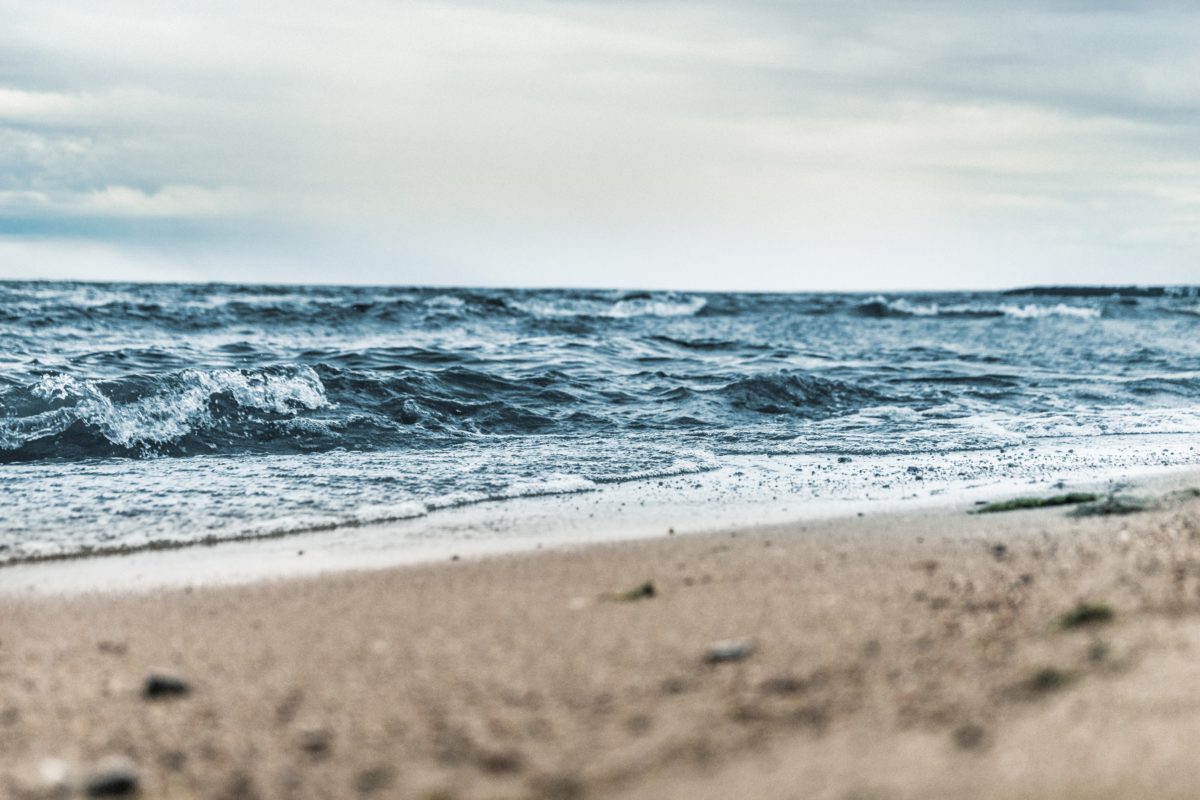Whether you’re near the shore or a landlocked poetry-lover, it’s hard to deny the powerful imagery of the sea. For some, a trip to the beach means summer, sunshine, warmth, and positivity. But for others, writing seaside channels a sense of vastness, infinite depth, and perhaps loneliness or even danger.
To celebrate the beach in all its moods, we’ve picked out 10 of our favorite maritime poems to read sprawled out under the sun or curled up under the covers.
“Dover Beach” by Matthew Arnold (1851)
Written shortly after Charles Darwin published The Origin of Species, “Dover Beach” is a breathtaking poem about a clash between science and religion. Staring down at the shoreline from a cliff, Arnold draws a parallel between the sand and sea and science and religion. Without drawing a definitive line in the sand, Arnold concedes that scientific discovery is beautiful, but it cannot make life meaningful without love.
“Secrets of the Sea (for Alan Kurdi)” by Mohamed Assan (2017)
In “Secrets of the Sea,” Assan provides commentary on the Syrian refugee crisis. The poem is for Alan Kurdi, a three-year-old Syrian boy whose name made global headlines in 2015 after he drowned in the mediterranean sea, but it is also for all the other refugees that lost their lives. Assan says Kurdi’s name changed the world, while others’ names remain “secrets of the sea.”
“I Started Early – Took My Dog” by Emily Dickinson (1951)
Dickinson never actually saw the ocean, yet we can fully experience its power through her poem. Relying on hymn and ballad forms (as Dickinson does best), this poem almost mimics the rhythm of waves crashing along the shore and creates a hymn-like cadence, elevating the mundane to feel nearly spiritual. The poem itself compares the sea to her house—mainly by placing mermaids in the basement. In a fantastic world of underwater imagination, Dickinson juxtaposes water-filled wonderment with the overall “solid” stat
“The Sea is History” by Derek Walcott (1973)
Originally from Saint Lucia, Walcott takes on the complicated themes of colonial history, culture, and life. The poem begins with the stanza, “Where are your monuments, your battles, martyrs? / Where is your tribal memory? Sirs, / in that great vault. The sea. The sea / has locked them up. The sea is History.” As he writes on, Walcott makes a point about how the colonizers of Saint Lucia have buried everything associated with its original inhabitants.
“Annabel Lee” by Edgar Allan Poe (1849)
This well-known ballad poem tells of the beautiful, painful memory of a lost love from the speaker’s youth. The speaker and his love, Annabel Lee, lived “in a kingdom by the sea,” which is depicted with a sense of innocence, youth, and romance. However, after his love’s unexpected death, the speaker juxtaposes the kingdom with “sepulcher there by the sea” to signify a more solid, gothic, and final feeling.
“The World Below the Brine” by Walt Whitman (1860)
In true transcendentalist fashion, Whitman admires the wide variety of plant and animal life in the sea. He then kicks the metaphor into high gear when describing a “society” inside the water, going on to encourage readers to imagine all the worlds that may exist within smaller ecosystems on this very earth.
“Sonnet on Being Cautioned Against Walking on a Headland” by Charlotte Smith (1797)
An English romantic poet, Smith is known as a key figure in the revival of the English sonnet. In this sonnet, the speaker gazes upon a person locally known as a lunatic pacing about a tall cliff above the sea. He is sad, moody, and murmurs to himself, but she says “I see him more with envy than with fear;” because she believes his ignorance provides him bliss. “He seems (uncursed with reason) not to know / The depth or the duration of his woe.”
“To the Sea” by Philip Larkin (1969)
In “To the Sea” Larkin makes an argument for the preservation of nature. Upon visiting his hometown, the speaker finds a beach from his childhood has become heartbreakingly deteriorated, writing, “Strange to it now, I watch the cloudless scene: The same clear water over smoothed pebbles, / The distant bathers’ weak protesting trebles / Down at its edge, and then the cheap cigars, / The chocolate-papers, tea-leaves, and, between / the rocks, rusting soup tins…” Larkin feels a deep disdain for the modern generation’s neglect but calls for beach-goers to teach their children better.
“Sea Fever” by John Masefield (1902)
This poem follows the movement of a tall ship through water. Through his imagery and rhythm, Masefield creates an image of powerful ocean swells. He claims that the sea beckons him with a “wild call.” Masefield alludes to the “lonely sea” and a “vagrant gypsy life” that offer a sense of freedom and adventure.
“Song of the Sea to the Shore” by Robert Fanning (2002)
Gorgeously written, this poem begins by describing the water as unraveling velvet. Fanning describes how the water fills the earth, but never fully encompasses it. Water is always changing its shape, filling yet fleeting. It is everywhere, yet never within your control.
With so many ways to use seaside imagery, poets have been drawing inspiration from the shoreline since the dawn of rhyme. From feelings of optimism, freedom, and adventure to themes of loss and loneliness, the sea is the ultimate metaphor. It is tangible, visual, and with the right metaphor, it’s also all-encompassing and ultimately mesmerizing.




